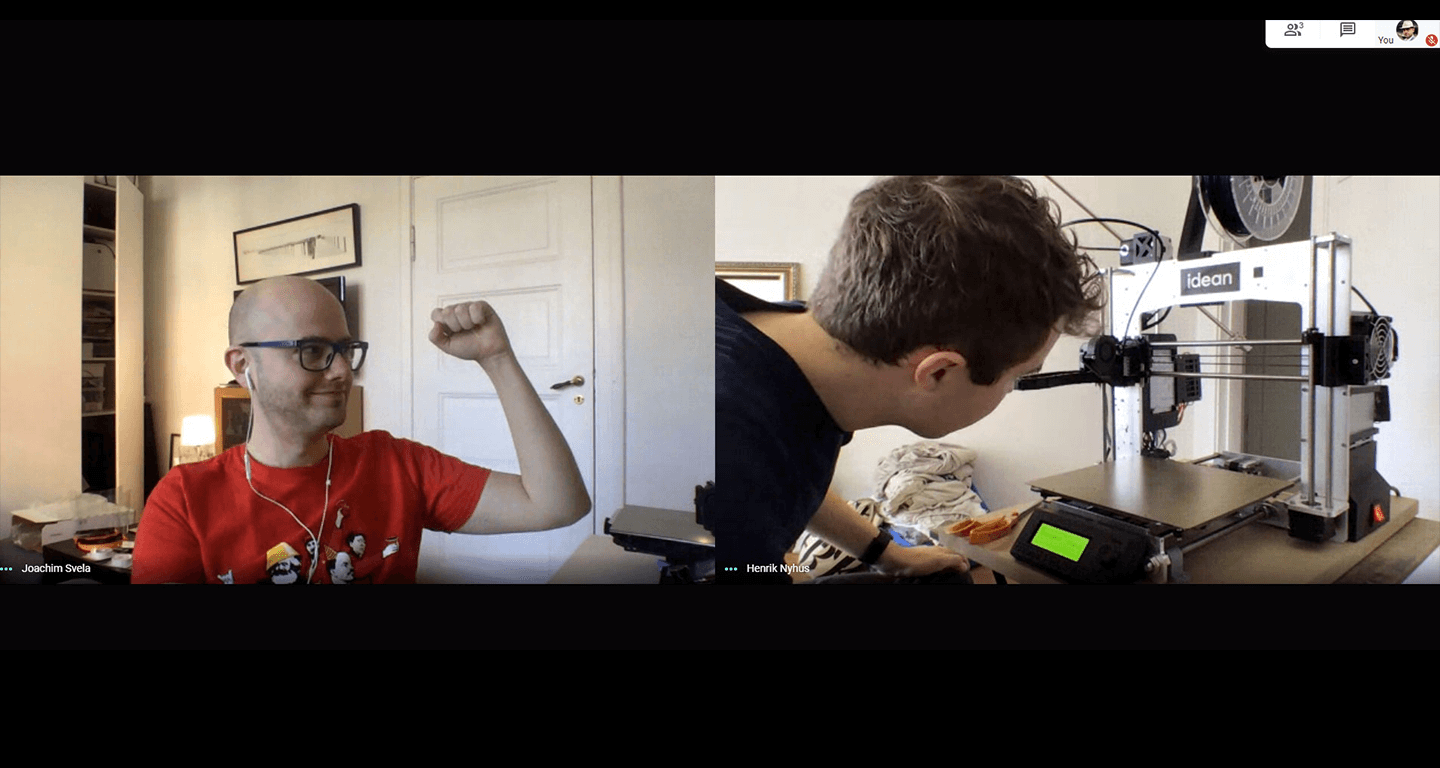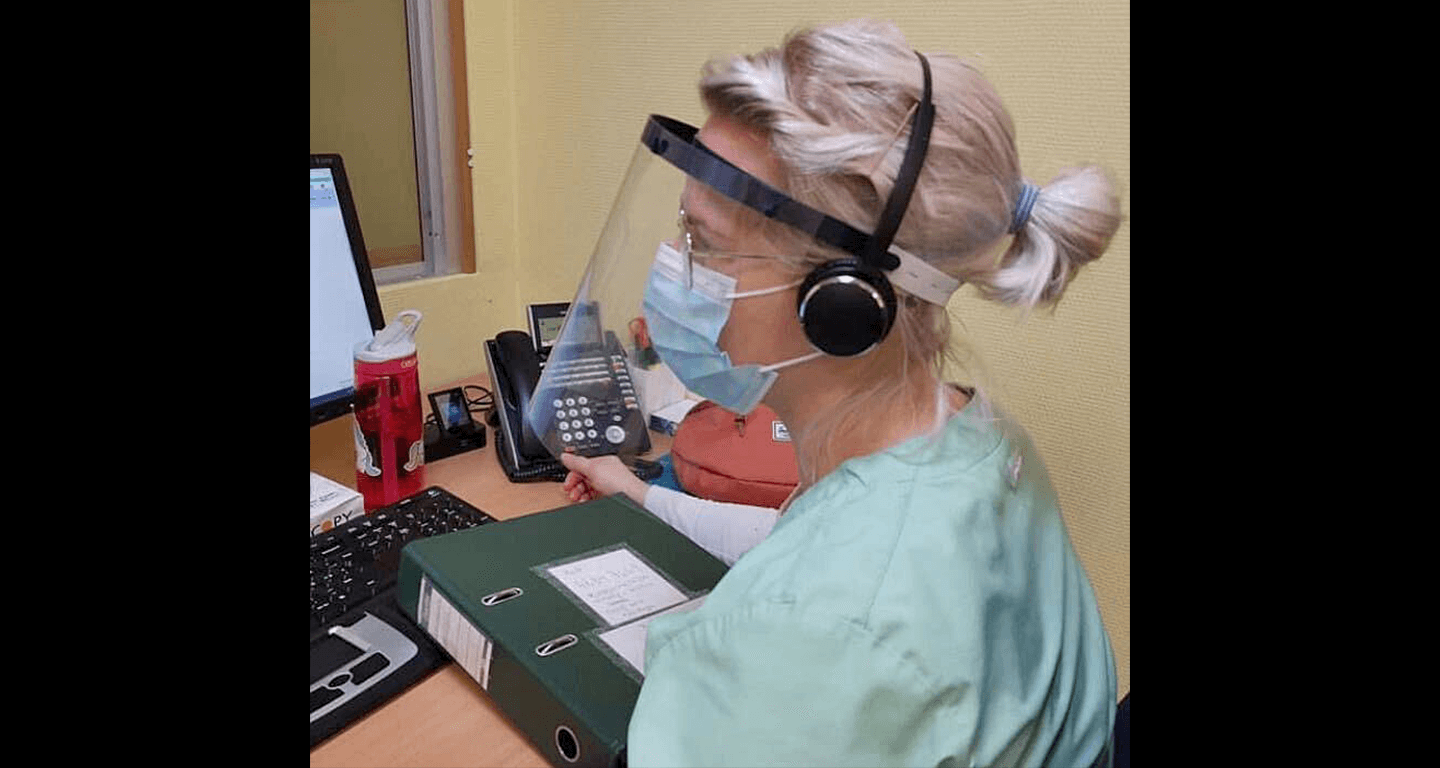
Meet Henrik: designing for good
Henrik Nyhus is a UX Designer at our Idean Oslo studio. Apart from creating experiences at work, Henrik has been actively engaging in community projects and supporting social initiatives, today we will share a little about what he has been up to.
How has the Covid-19 affected your everyday life?
My life is very different now than how it used to be. It’s weird because it all happened so gradually so I can’t pinpoint exactly when and how it all changed. It feels normal now. I am working from home and limiting my social life, but I am trying to come up with ways to keep my life as normal as I can. Although it’s not a great situation for anyone – I try to look at the positive side of things. Now I have more time to take care of myself, experiment with cooking and explore new hobbies. Additionally, I bought gym equipment so I can do the workouts I want from home. I FaceTime with family and friends frequently to stay in touch and make sure they are okay.
What changes have you been noticing in your local community?
I notice how people avoid getting too close to others in the street and in shops. The other day I saw a lady with an actual metering tape measuring the distance between herself and others. Also, more and more people are wearing face masks which I never thought would become a normal sight here in Oslo.
We know you have been an important contributor in the community initiative of 3D printing face shields for healthcare workers, can you tell us how you got involved?
I got into 3D printing by joining a call with our Creative Director Joachim Svela, who hosted an internal introductory session on 3D printing. Since we were in the middle of a pandemic he also spent some time talking about his effort in printing visors for healthcare professionals. At the end of the call, he explained how others could help by adopting the 3D printer from our Oslo Office. I volunteered and the 3D printer was delivered to me the day after from our Head of Studio.

How does this process work?
Before this, I had never touched a 3D printer. Once it was delivered to me – Joachim and I had a call where we went through how the printer works and how to get it started. There is a nationwide effort to mobilize all 3D printers to print visors and they mostly coordinate this on Facebook. This site connects people who print with workers who are in need of extra protection. I used a 3D file created by Joachim and ran it through a “slicer”. This “slicing” process makes the 3d model readable by 3d printers and specifically the one you have yourself. It takes about 1 hour and 20 minutes to print the head frame, then comes assembly. I have been sourcing different parts from local shops and Finn.no. For example, fasteners for the head frame are elastic bands found in fabric retailers, and the plastic shields are actually old overhead foils I found online. I disinfect each part with plastic gloves on, then assemble and pack them into individual ziplock bags before delivering them in person or via post.
How has this experience been for you? Have you received any feedback?
I had a lot of issues with the 3D printer the first couple of weeks, but after a lot of troubleshooting I became quite effective at diagnosing the problems. People have also been very supportive in this effort. My boyfriend now also knows how to print so he helps me with printing, disinfection and assembly. My parents and aunt have also supported me in calling and delivering to different clinics. At some point I ran out of supplies and my colleague James McKay went out of his way to search for it and delivered it to my door. The feedback from the places I have delivered to have been very positive.

Have you always participated in social initiatives like this?
I have not been as active in volunteering and other social initiatives as I would like to, but I have periodically dedicated some time to help out. When I lived in New York I volunteered once a week at a soup kitchen in Brooklyn where we would cook, provide clean clothes and showers for the homeless people in the area. I also used to volunteer for the Red Cross at a youth center in Grønland in Oslo once a week and it was a really great experience. I plan to recommit some time to the Red Cross in the near future and try out other volunteering activities.
What’s next?
I am going to continue helping out by making and delivering more visors to those who need it. I also want to start producing other things that could help, such as face mask straps that alleviate the ears. Reach out to me if you want to learn more or if you know anyone who needs visors.

frog, part of Capgemini Invent is a global design and innovation firm. We transform businesses at scale by creating systems of brand, product and service that deliver a distinctly better experience. We strive to touch hearts and move markets. Our passion is to transform ideas into realities. We partner with clients to anticipate the future, evolve organizations and advance the human experience.
We respect your privacy
We use Cookies to improve your experience on our website. They help us to improve site performance, present you relevant advertising and enable you to share content in social media. You may accept all Cookies, or choose to manage them individually. You can change your settings at any time by clicking Cookie Settings available in the footer of every page. For more information related to the Cookies, please visit our Cookie Policy.
Our Studios


